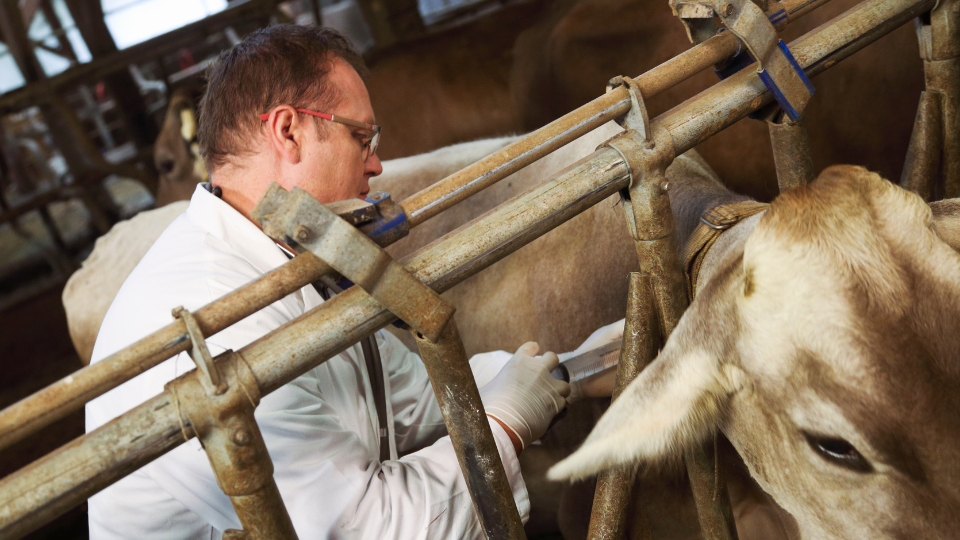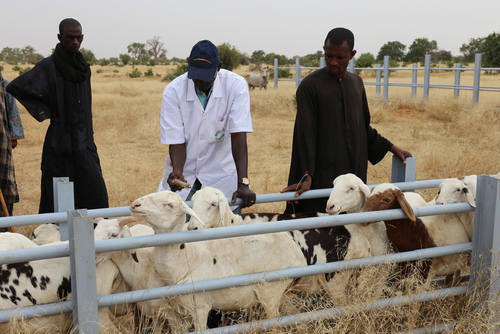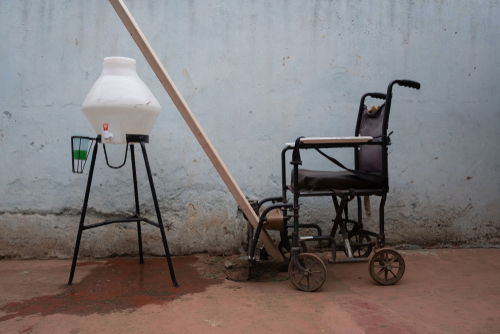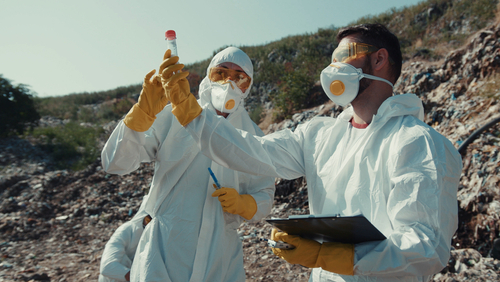September 25, 2023

Calling on US Senate leaders to address antibiotic use in animals in revised bill
On September 6, 2023, leading organizations in infectious diseases, medicine, the environment, and animal welfare, including the One Health Trust, sent a letter to the U.S. Senate, urging them to include public health protections in the new Animal Drug User Fee Act (ADUFA) bill to address the overuse of antibiotics in the animal sector. In a blog post, the Natural Resources Defense Council (NRDC) highlighted OHT data on antibiotic use and sales in human medicine and livestock to convey the importance of the recommended changes to the ADUFA bill. Notable findings in the data include the increase in the “intensity” of antibiotic use in livestock relative to human medicine from 9 percent in 2017 to 55 percent greater in 2020, as well as the calculation that the intensity of use in US pigs was 142 percent more intense relative to human medicine in 2020. These numbers indicate that antimicrobial use in animal agricultural practices in the US is only increasing and requires further attention in national policy decisions. [NRDC]
Stochasticity decreases the detectability of seasonality effects on prevalence and admission rates for hospital-acquired infections.
One Health Trust researchers developed an agent-based model of an intensive care unit (ICU) to assess the effects of uncertainties on the nosocomial transmission dynamics of hospital-acquired infections (HAIs). They aimed to evaluate the effect of inherent uncertainty, or stochasticity, on the ability to detect the seasonality of HAI acquisition rates and admission prevalence. They found that when the seasonality strength and baseline acquisition rate decreased past a specific threshold, there was a 20 to 30 percent chance that the seasonality effect would be undetectable due to the presence of “noise” — caused by stochasticity — blurring the seasonality signal. Given an admission prevalence of 5 to 10 percent, the minimum sample size of ICUs needed to detect the effect of seasonality was 50 (assuming a seasonality strength of 90 percent or more). These findings reveal that the highly stochastic nature of HAI transmission can drastically complicate the effects of environmental changes, such as seasonal transmission. [Royal Society Open Science]
Estimating the pooled prevalence of AMR in Ethiopia in the human, animal, and environmental sectors
A systematic review and meta-analysis assessed the pooled prevalence of antibiotic resistance in Ethiopia using a One Health approach. The most frequently identified bacterial isolates were Escherichia coli (n = 716), Klebsiella species (n = 543), and Pseudomonas species (n = 401). E. coli detected in human isolates displayed a high proportion of pooled resistance to ampicillin (0.89), cotrimoxazole (0.83), and ceftriaxone (0.79). Similarly, Klebsiella spp. in human isolates had a higher proportion of resistance to cotrimoxazole (0.82) and ceftriaxone (0.80). E. coli isolates from animal samples had the highest proportion of resistance to ampicillin (0.79) and amoxicillin-clavulanic acid (0.50). The highest rates of multidrug resistance (MDR) were found in Acinetobacter (92 percent), followed closely by Klebsiella spp (86 percent). While the pooled prevalence of antibiotic resistance and MDR was higher in human isolates compared to environmental and animal isolates, 10 to 66 percent of the ESBL production rate was identified in environmental isolates. [One Health Outlook]
Gastrointestinal parasites in street dogs pose a health threat to people, domestic animals, and wildlife in Lalitpur, Nepal.
Dogs are worshiped by Hindus in Nepal; however, most are free-ranging and live on the street, where they rely on slaughterhouses, garbage dumps, temples, and other public places for food. Due to a lack of effective deworming and immunization programs, feral dogs suffer a near-one-hundred percent prevalence of gastrointestinal parasitic infestation, most of which are zoonotic. A cross-sectional study of 332 street dogs in Lalitpur, the third largest city in Nepal, found 95.7 percent of dogs had intestinal parasites, and 92.5 percent were infested with at least 1 species of zoonotic parasite. Veterinarians and public health workers must cooperate to implement a One Health plan for deworming and vaccinating street dogs to reduce the prevalence of disease and the risk of zoonosis. [Veterinary Medicine and Science]
Reduction of prophylactic antibiotic use in livestock must be paired with other interventions to reduce antimicrobial resistance.
A cross-sectional study of antimicrobial use and farming practices in smallholder livestock farms in Uganda found that non-therapeutic use of antibiotics, while contributing to antimicrobial resistance, improves livestock productivity and prevents disease. Antibiotic use is often used to compensate for poor water, sanitation, and hygiene practices and insufficient biosecurity infrastructure in areas where agricultural productivity is paramount for economic stability and food security. Therefore, a One Health approach must be applied to develop interventions that allow farmers to safely reduce their antibiotic use while protecting animal health, productivity, and food security. Interventions should include increasing access to animal health services, improving vaccination coverage, and improving farm biosecurity. [One Health]
Shifting R&D’s focus towards equity by supporting local innovation efforts
As a UN General Assembly convenes to discuss pandemic preparedness and response (PPR), experts propose a paradigm shift to focus on equity in the research and development (R&D) value chain by prioritizing equitable access to knowledge generation and distribution and focusing on local innovative responses to outbreaks and epidemics. Included in this proposal is a call for the establishment of regional R&D hubs that focus on last-mile innovation, an approach to technological advancement that accelerates innovation to respond to novel threats and public health needs. Transforming R&D into an equitable venture can occur in several ways, such as technology buy-outs or supporting local capacities in low- and middle-income countries (LMICs). Regardless, financing these efforts will require changes at the policy level that move R&D away from market and commercial incentives and towards commitments to public health and equity. [The Lancet Global Health]
Cholera-causing bacteria can persist on plastic and organic materials in simulated flood conditions.
Researchers investigated the potential for toxigenic Vibrio cholerae serotypes to colonize and persist on a simulated peri-urban environmental waste pile, as well as their ability to cycle between the so-called plastisphere (the microbial community on plastic debri) and flood water. Several V. cholerae serotypes ( O1 classical, O1 El Tor and O139) persisted in polythene (PE), polypropylene (PP), and banana leaf (BL) at 20°C in both fresh surface water (FW) and brackish water (BW). However, O1 classical and O139 isolates could not be recovered from PE after spending seven days in FW, and O139 was not found on PP after seven days in BW. All three isolates persisted on BL and were recovered after two weeks, regardless of the water type. Additionally, all 3 strains could be transferred into fresh floodwater from the plastisphere at days 1, 7, 14, and 35. The concentrations of these serotypes persisting on desiccated material and in the simulated floodwater fell within the concentrations capable of causing infection (between 1 x 103 and 1 x 108 CFUs/mL), confirming that plastic and organic material can serve as a reservoir for V. cholerae. [Journal of Hazardous Materials]
Metagenomic evaluations of travelers’ gut microbiomes
Researchers investigated the role of the gut microbiome of US-based international travelers in resisting the acquisition of antimicrobial-resistant pathogens and the effect of travel on gut microbiomes. They performed a metagenomic analysis of the participants’ stools before and after traveling internationally for three target organisms: extended-spectrum beta-lactamase-producing, carbapenem-resistant, and mcr-mediated colistin-resistant Enterobacterales. Over one-third of travelers acquired at least one of the target pathogens, of which nearly all acquired ESBL-producing E. coli. One-third of travelers reported experiencing traveler’s diarrhea, and 18 percent of these participants reported receiving antibiotic treatment for their symptoms. Visiting friends or family (odds ratio 4.15), traveling to South Asia (OR 2.34), and consumption of uncooked vegetables (OR 2.19) were identified as risk factors for acquiring the target AMR organisms. Travel to southern Africa had a protective effect against pathogen acquisition (0.15). Furthermore, over two-thirds of travelers acquired a new strain of E. coli after travel, indicating a need for future research into the risk factors and possible behavioral patterns associated with E. coli acquisition among international travelers. [The Lancet Microbe]
Image from Canva











